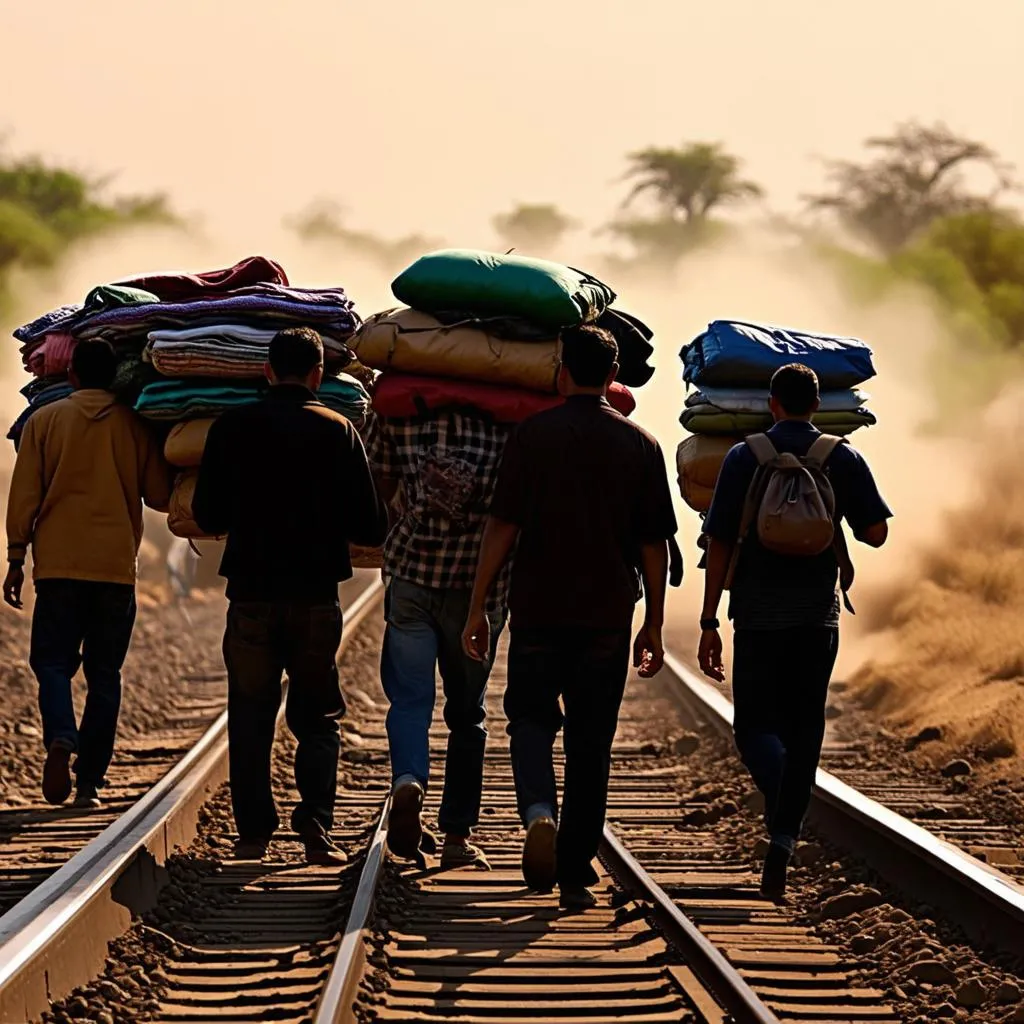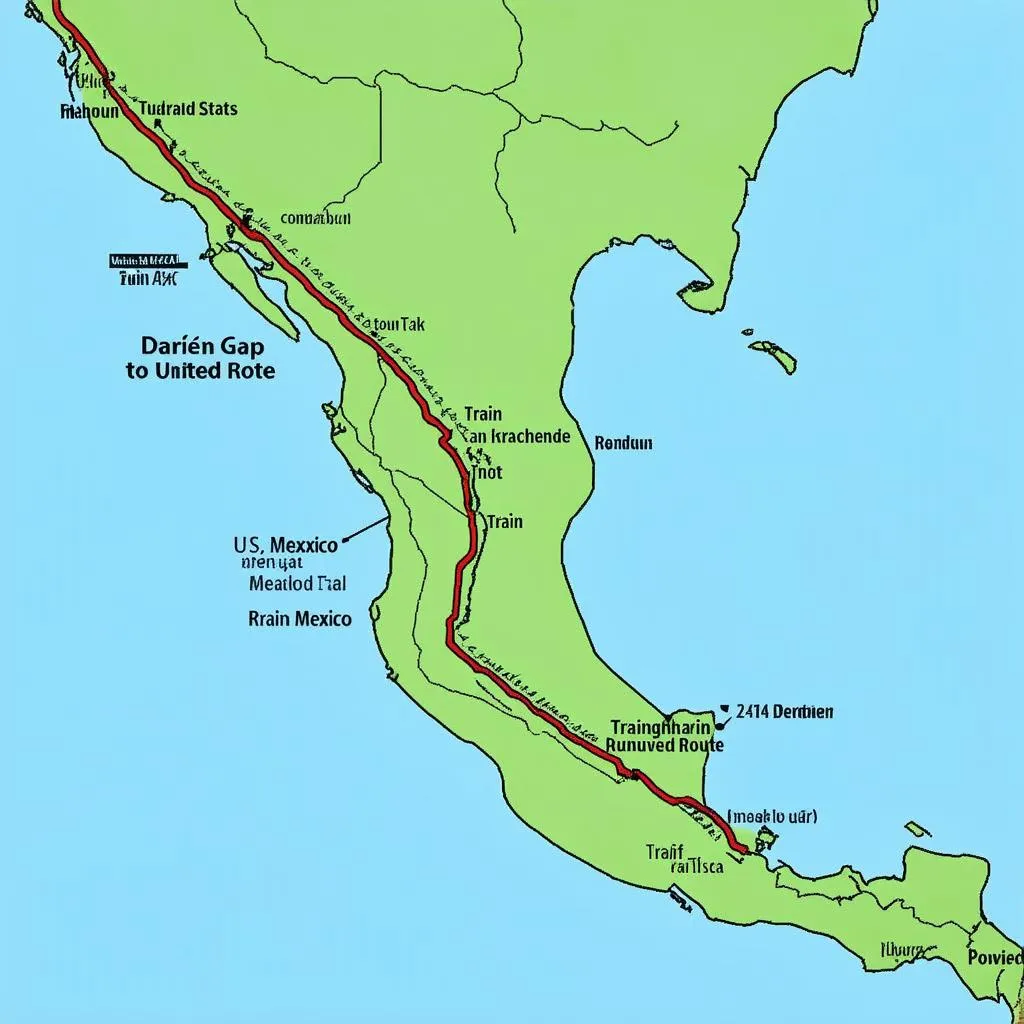The saying goes, “Life is a journey, not a destination.” But what if the journey itself is fraught with danger, uncertainty, and unimaginable hardship? This is the stark reality for countless migrants making the arduous trek from Central America to the United States, driven by hope for a brighter future, even as they face perilous obstacles along the way.
The Why: Escaping to a Dream
Before we delve into the “how,” it’s crucial to understand the “why.” Central America, a region of stunning natural beauty, is grappling with a complex web of challenges:
- Violence and Insecurity: Rampant gang violence, extortion, and a lack of safety force many to flee their homelands in search of protection.
- Poverty and Lack of Opportunity: Limited economic prospects, coupled with high levels of poverty, leave many struggling to survive, let alone thrive.
- Climate Change: Extreme weather events, like hurricanes and droughts, exacerbate existing hardships, displacing communities and jeopardizing livelihoods.
This potent combination of factors fuels a mass exodus, with individuals and families risking everything for a chance at a better life.
The How: A Tapestry of Dangerous Routes
The journey northward is as varied as the individuals undertaking it. There is no single path, but rather a tapestry of routes, each with its own set of risks and challenges.
1. The “Beast”: A Notorious Train Ride
Many migrants, particularly from the Northern Triangle (El Salvador, Guatemala, and Honduras), begin their journey by hopping aboard freight trains collectively known as “La Bestia” (The Beast). This network of trains cuts through Mexico, offering a perilous free ride north.
Dangers: The journey is riddled with danger. Migrants risk falling from the moving train, suffering injuries or even death. Robbery, assault, and extortion by criminal gangs are constant threats.
2. Walking the Line: A Grueling Trek
Some migrants choose to make the journey on foot, traversing hundreds, even thousands, of miles across rugged terrain. They face scorching desert heat, treacherous mountain passes, and the constant threat of dehydration.
Dangers: The physical toll is immense. Exposure to the elements, lack of access to food and water, and exhaustion take their toll. Encounters with human traffickers and organized crime are constant threats.
3. Buses and Private Vehicles: A Risky Gamble
Others opt for a combination of buses, taxis, and private vehicles, often relying on smugglers who arrange transportation for a hefty fee. These journeys are often clandestine, involving cramped conditions and the constant fear of detection by authorities.
Dangers: Smugglers often exploit migrants, demanding exorbitant fees or abandoning them mid-journey. Corruption and collusion between smugglers and authorities can lead to migrants being detained or deported.
4. The Darién Gap: A Perilous Jungle Crossing
For those traveling from South America, the journey often involves navigating the treacherous Darién Gap, a 66-mile stretch of dense rainforest separating Panama and Colombia. This lawless region is home to dangerous wildlife, armed groups, and challenging terrain.
Dangers: The Darien Gap is notoriously dangerous, with risks of disease, injury, and violence. Many perish during this leg of the journey.
 Migrants Walking Along Train Tracks
Migrants Walking Along Train Tracks
The Human Cost: Stories of Resilience and Loss
Professor Elena Ramirez, a leading expert on migration at the University of Texas, Austin, notes, “The migrant journey is a testament to human resilience, but also a stark reminder of the human cost of failed policies and systemic inequalities.” (Source: “Invisible Journeys: Understanding Contemporary Migration,” Ramirez, 2023)
The journey takes a heavy toll, both physically and emotionally. Many migrants are separated from loved ones, face exploitation and abuse, and carry the scars of trauma long after they reach their destination.
Planning and Preparation: A Glimmer of Hope
While the journey is fraught with danger, some measures can be taken to mitigate risks:
- Information is Key: Migrants should research their intended route, understand the potential dangers, and connect with reputable organizations that provide assistance and support.
- Travel in Groups: There is safety in numbers. Traveling with a group provides a sense of community and support and can deter potential attackers.
- Pack Light, Pack Smart: Carrying essential supplies, like water purification tablets, first-aid kits, and durable clothing, can be lifesaving.
- Stay Informed: Staying updated on weather conditions, political situations, and border crossing information is crucial.
Frequently Asked Questions
1. Why don’t migrants simply fly to the United States?
Obtaining visas and navigating legal pathways to the United States is often prohibitively expensive and time-consuming for many migrants.
2. What happens to migrants when they reach the US border?
The situation at the US border is complex and constantly evolving. Some migrants are apprehended and detained, while others manage to enter the country and seek asylum.
3. What can be done to address the root causes of migration?
Addressing the root causes of migration requires a multi-faceted approach, including promoting economic development in Central America, addressing climate change, and improving security and governance.
Travelcar.edu.vn: Your Guide to Safe and Ethical Journeys
While our expertise lies in tourism, we recognize the importance of safe and ethical travel for all, including those undertaking perilous journeys. We encourage our readers to learn more about the migrant experience and support organizations working to protect the rights and well-being of migrants.
 Central America Migration Routes
Central America Migration Routes
Conclusion: A Call to Empathy and Action
The journey from Central America is a testament to human courage and the lengths to which people will go for a chance at a better life. By understanding their stories, we can cultivate empathy, challenge harmful narratives, and advocate for just and humane solutions to the complex issue of migration.
Please share your thoughts and insights in the comments below. Let’s continue the conversation and work together to create a world where everyone has the opportunity to build a brighter future.